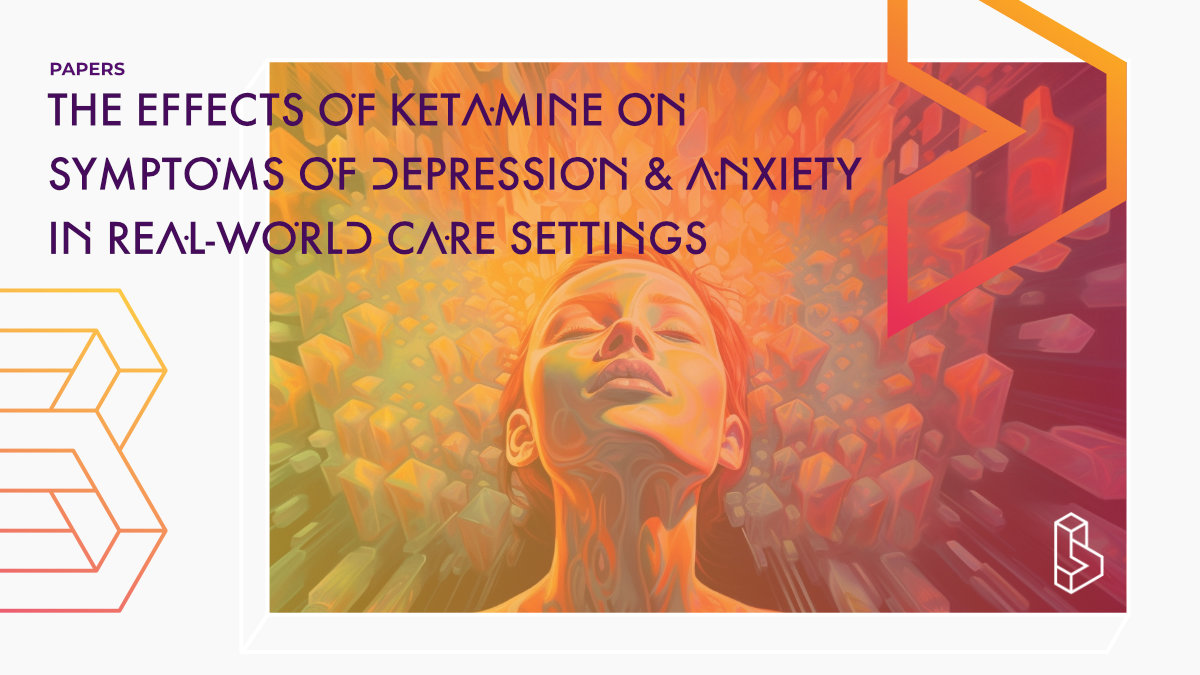This retrospective controlled analysis (n=2758) conducted in ten community clinics across the US evaluates the impact of Ketamine Intravenous Therapy (KIT) on depression and anxiety symptoms. Results indicate significant reductions in both anxiety and depression symptoms post-induction (Cohen’s d = 1.17 and d = 1.56, respectively) and greater depression symptom reduction at eight weeks compared to KIT-naive patients or those beginning standard antidepressant therapy (Cohen’s d = -1.03 and d = -0.62 respectively).
Abstract of The effects of ketamine on symptoms of depression and anxiety in real-world care settings
“Introduction Ketamine intravenous therapy (KIT) appears effective for treating depression in controlled trials testing a short series of infusions. A rapidly proliferating number of clinics offer KIT for depression and anxiety, using protocols without a strong evidence basis. Controlled comparison of mood and anxiety from real-world KIT clinics, and the stability of outcomes, is lacking.
Methods We performed a retrospective controlled analysis on patients treated with KIT in ten community clinics across the US, between 08/2017-03/2020. Depression and anxiety symptoms were evaluated using the Quick Inventory of Depressive Symptomatology-Self Report 16-item (QIDS) and the Generalized Anxiety Disorder 7-item (GAD-7) scales, respectively. Comparison data sets from patients who did not undergo KIT were obtained from previously published real-world studies.
Results Of 2758 patients treated, 714 and 836 met criteria for analysis of KIT induction and maintenance outcomes, respectively. Patients exhibited significant and concordant reduction in both anxiety and depression symptoms after induction (Cohen’s d = 1.17 and d = 1.56, respectively). Compared to two external datasets of KIT-naive depressed patients or patients starting standard antidepressant therapy, KIT patients experienced a significantly greater reduction in depression symptoms at eight weeks (Cohen’s d= -1.03 and d = -0.62 respectively). Furthermore, we identified a subpopulation of late-responders. During maintenance, up to a year post-induction, increases in symptoms were minimal.
Limitations Due to the retrospective nature of the analyses, interpreting this dataset is limited by incomplete patient information and sample attrition.
Conclusions KIT treatment elicited robust symptomatic relief that remained stable up to one year of follow-up.”
Authors: Tuuli M. Hietamies, L. Alison McInnes, Andrew J. Klise, Matthew J. Worley, Jimmy J. Qian, Leanne M. Williams, Boris D. Heifets & Steven P. Levine
Find this paper
https://doi.org/10.1016/j.jad.2023.04.141
Open Access | Google Scholar | Backup | 🕊
Cite this paper (APA)
Hietamies, T. M., McInnes, L. A., Klise, A. J., Worley, M. J., Qian, J. J., Williams, L. M., ... & Levine, S. P. (2023). The effects of ketamine on symptoms of depression and anxiety in real-world care settings: A retrospective controlled analysis. Journal of Affective Disorders.
Study details
Compounds studied
Ketamine
Topics studied
Anxiety
Depression
Study characteristics
Observational
Participants
2758
Humans

